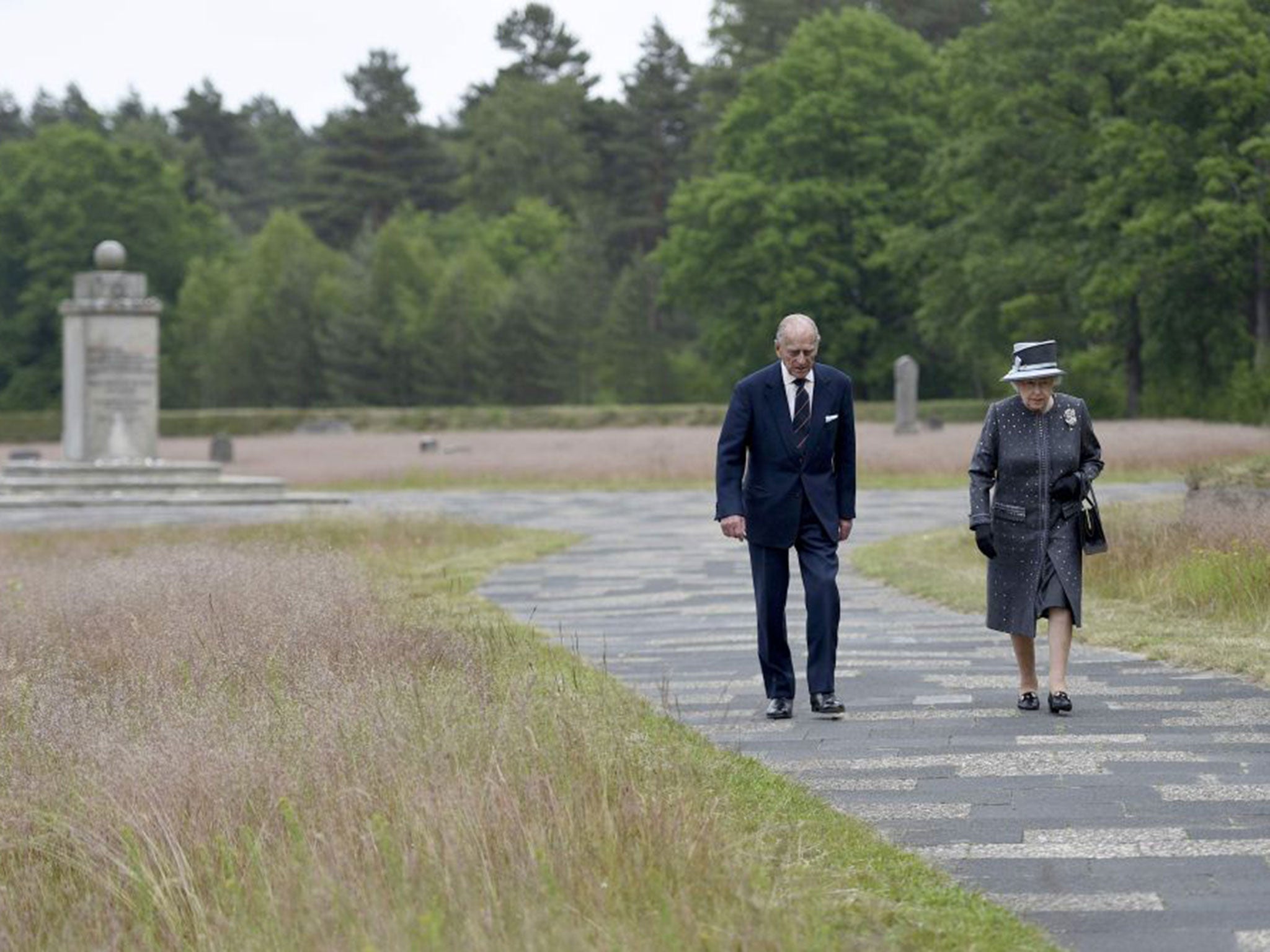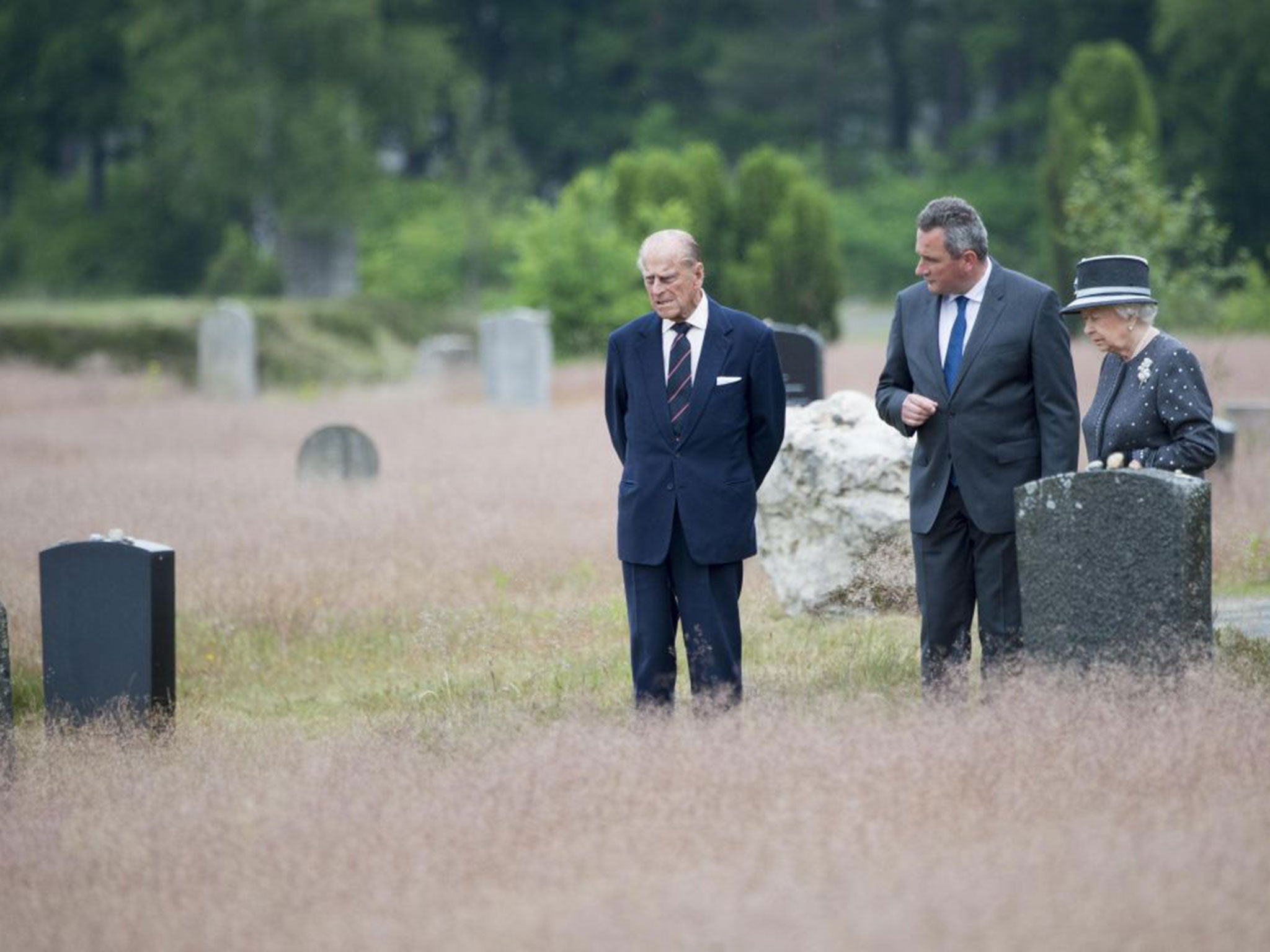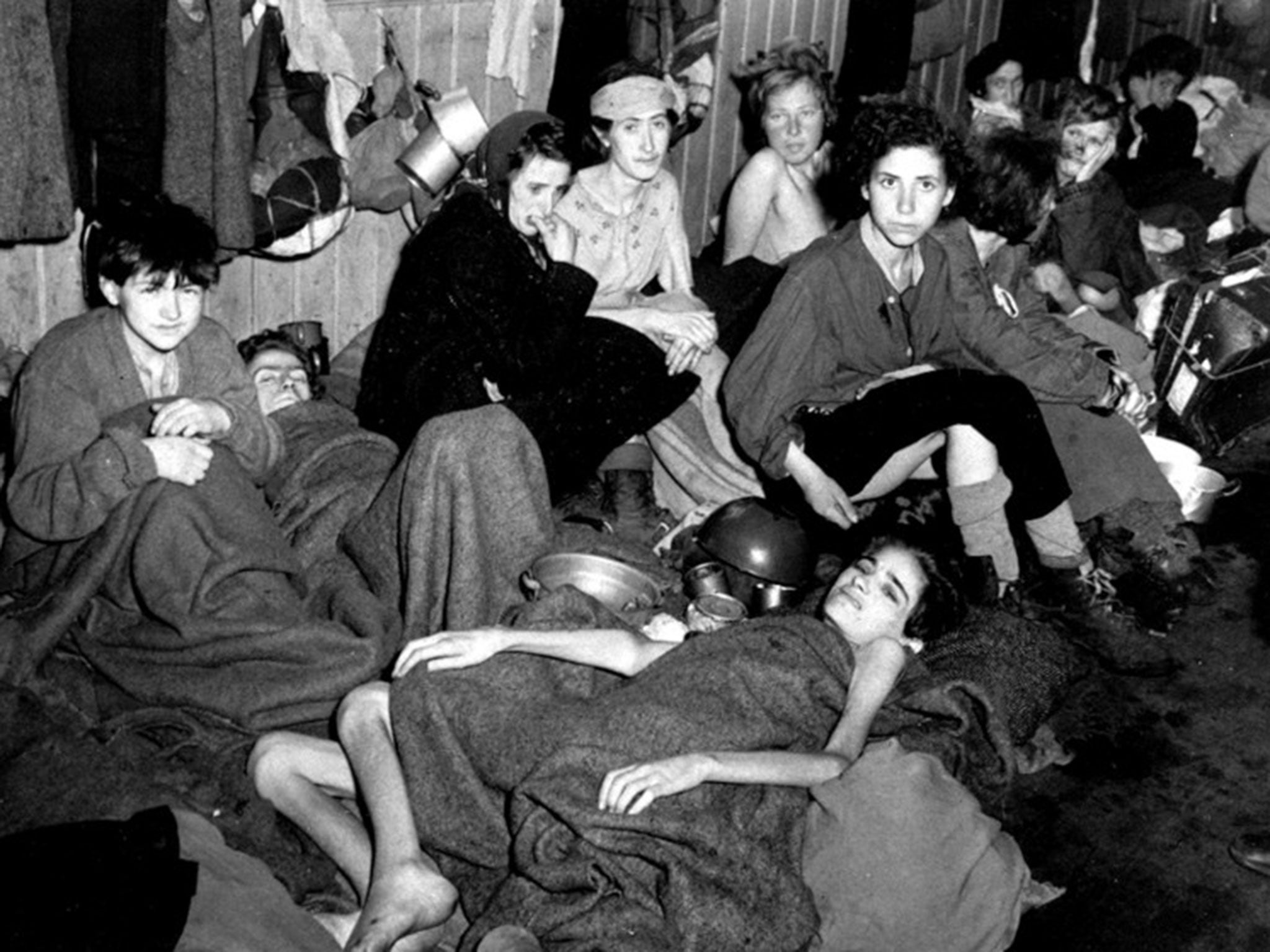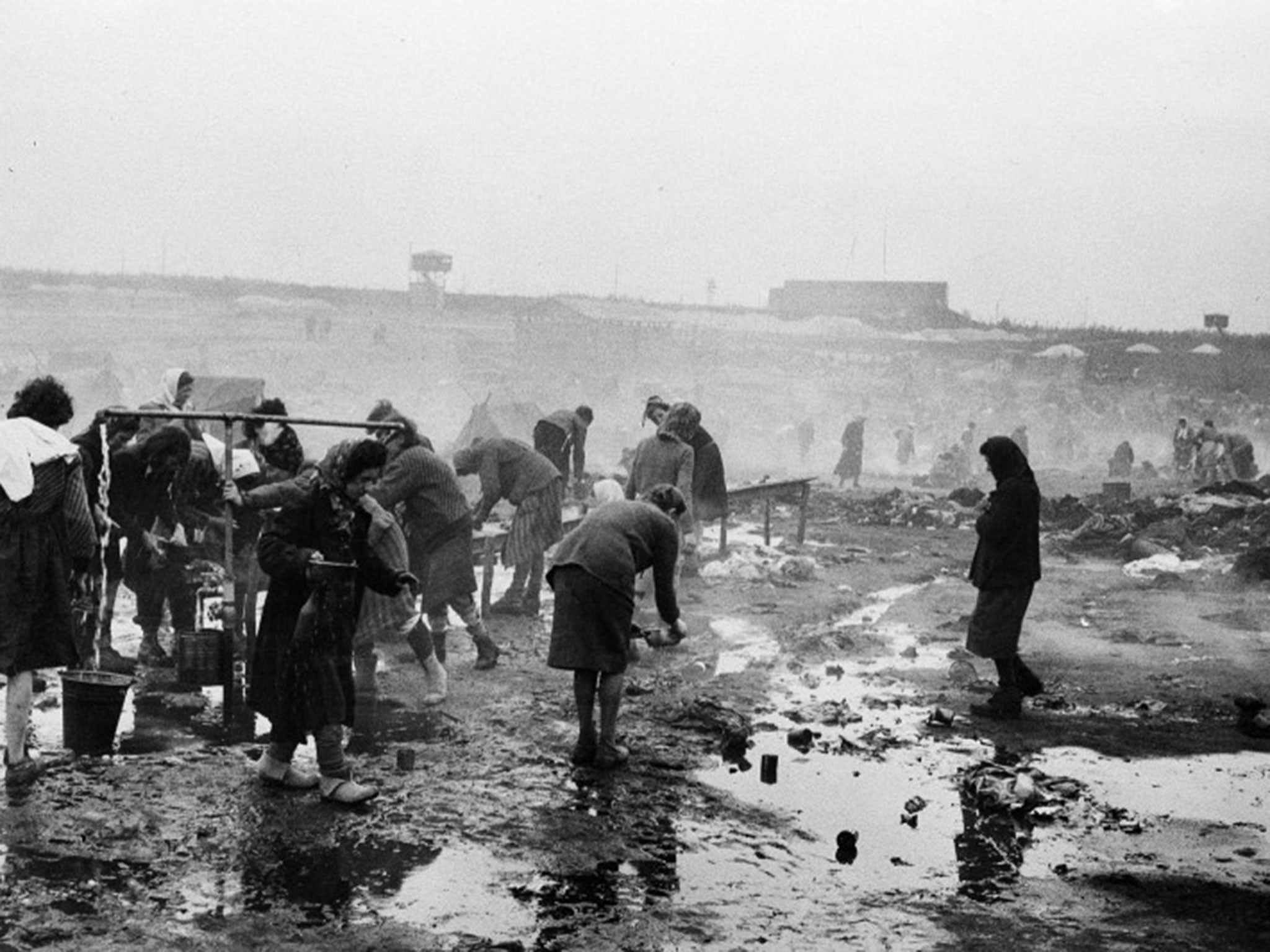Belsen remembered: Seventy years on, the Queen joins German dignitaries and Holocaust survivors at one of the Nazis' most notorious camps
In a solemn gesture of reconciliation, Her Majesty and the Duke of Edinburgh laid a wreath in memory of the thousands killed

Your support helps us to tell the story
From reproductive rights to climate change to Big Tech, The Independent is on the ground when the story is developing. Whether it's investigating the financials of Elon Musk's pro-Trump PAC or producing our latest documentary, 'The A Word', which shines a light on the American women fighting for reproductive rights, we know how important it is to parse out the facts from the messaging.
At such a critical moment in US history, we need reporters on the ground. Your donation allows us to keep sending journalists to speak to both sides of the story.
The Independent is trusted by Americans across the entire political spectrum. And unlike many other quality news outlets, we choose not to lock Americans out of our reporting and analysis with paywalls. We believe quality journalism should be available to everyone, paid for by those who can afford it.
Your support makes all the difference.It was the BBC journalist Richard Dimbleby who first revealed the sickening horror of Belsen to Britain with his chilling broadcast about the nightmare conditions in the Nazi death camp, broadcast on 19 April 1945 – just two days before Princess Elizabeth’s 19th birthday.
It’s probable that the woman who is now Queen, and was then a young Territorial Army recruit, listened to it. But during her 62-year reign she had never before been to Belsen, or to any other Nazi concentration camp – an omission which has provoked some criticism.
Now, the Queen has made up for her absence with a visit to the site of the former Nazi concentration camp where more than 70,000 Holocaust victims died. As she met survivors of Belsen and some of their liberators, listening at first hand to their harrowing accounts, she responded with feeling: “It must have been horrific.”

Horrific it most certainly was. Dimbleby is reported to have wept as he delivered his report, just days after the British Army’s 11th Armoured Division entered the camp. “I found a girl, she was a living skeleton,” he told his listeners. “It was impossible to gauge her age because she had practically no hair on her head and her face was only a yellow parchment sheet, with two holes for eyes. She was stretching out her stick of an arm and gasping something, it was ‘English, English, medicine’.”
At Belsen, the British soldiers encountered a tetanus and typhoid-infested hell. The pathways between the prison huts were covered with the lice-infested corpses of shockingly emaciated men, women and children. Those still alive had been reduced to living skeletons from starvation and disease. There were 60,000 prisoners in the massively overcrowded camp while some 13,000 corpses lay strewn inside the barbed wire perimeter fence.
There is little evidence of that horror at Belsen today. The former camp was deliberately burnt to the ground in 1945 to eradicate disease. Nowadays it is a vast field of largely uncut grass which is dotted with memorial stones and surrounded by trees. As the Queen and the Duke of Edinburgh walked slowly through this landscape and laid a wreath in memory of the thousands killed, it looked almost pastoral.

The scene was in marked contrast to the nightmare experienced by Belsen survivors such as Anita Lasker-Wallfisch, who had travelled from Britain to meet the Queen at the site of the former camp. Now in her eighties, Mrs Lasker-Wallfisch is an accomplished cellist who survived Auschwitz because she was able to play her instrument in the death camp’s orchestra.
She was deported to Belsen during the closing stages of the war. “People ask me which was worse, Auschwitz or Belsen?” she told The Independent. “Auschwitz was a well organised extermination camp with all the apparatus. In Belsen they didn’t need the apparatus, you just perished anyway.”
Mrs Lasker-Wallfisch told the Queen that had the British not arrived in mid-April 1945, she would probably not have survived. “There was no food and no water left, I doubt I would have made it,” she said. Pointing behind her she added: “I am very glad to be here and to be able to speak for the mounds of earth containing dead bodies just over there.”

The Queen’s four-day state visit to Germany has received huge publicity. It has been seen as a reinforcement of already close ties between the two nations and as an attempt to gain Chancellor Angela Merkel’s support for David Cameron’s plans for a “new deal” for the UK in Europe.
But for some of the liberators of Belsen who met the Queen, it more about reconciliation. Captain Eric Brown RN, a former Fleet Air Arm pilot now aged 96, was one of the first of the British to enter Belsen. “The first thing that hit you was the stink of rotting corpses and the sight of the camp inmates who had lost all civilised values. It was absolutely horrific,” he recalled.
“I am so glad that the Queen has come here,” he said. This is all about reconciliation. It is telling the Germans and particularly the younger generation of Germans that they have no part in this. They do not have to feel guilty. Her visit was long overdue.”
For others, such as 83-year-old Belsen survivor Rudi Oppenheimer, it was also chance to lay a stone and light a candle at the memorial in memory of his parents who perished in Belsen when he was just 12 years old.
Rudi and his sister left on the last German train to leave Belsen just before the British arrived. “If I wanted anything from the Queen’s visit to Belsen, it was a gesture of thanks to the people who liberated this place. I think they have now got it,” he said.